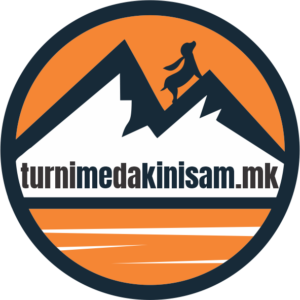Lake Ohrid – the largest and most important natural lake in Macedonia, the oldest in Europe and, from a biological point of view, the most significant stagnant aquatic ecosystem on the continent. It is characterized by rich history, culture, archeological sites and natural beauty, and is shared by two countries: Macedonia and Albania.
Thanks to such features, in 1980 Lake Ohrid and the city of Ohrid were declared a World Cultural Heritage, under the protection of UNESCO. The world importance of the lake was confirmed in 2010. when NASA and the International Astronomical Union decide to name one of the lakes on Saturn’s moon Titan “Lake Ohrid”.
The lake covers an area of 358.2 km2 and stretches for a length of 30.8 km, with a maximum width of 14.8 km. The length of the coast is 87.5 km. Its depth reaches 289 m. The total volume of the lake is 58.6 km3. The lake is located in a deep and closed valley, bordered on the east by the mountain Galichica (2288 m), and on the west by Jablanica (2257 m).
Located in altitude 695 meters. The catchment area of Lake Ohrid includes 40 rivers, of which 23 on Albanian and 17 on Macedonian territory. The greatest depth of 286 meters was measured between the villages of Peshtani and Trpejca, about 5 km from the lake shore. The average depth of the lake is 151 m. The clear water with a transparency of up to 22 meters, which is a real rarity, is helped by the numerous underwater springs and springs that are located along the east and south coasts.
Bay of Bones – a bay in Lake Ohrid and an archeological site of a prehistoric settlement from the Late Bronze and Early Iron Age. It is located next to the peninsula and the auto camp Gradishte, between the villages Peshtani and Trpejca. It is 3 to 5 meters deep. The place is called “Ploca Micov Grad” and today there is a reconstruction of the pile dwellings (Water Museum “Bay of Bones”) and platforms, as well as its own visitor center with an exhibition space for the findings. Above it rises a renewed Roman fortification (Castrum) with military facilities of that time, in a site called Gradishte.
The nearest stake of a total of 6,000 was found 12 meters into the lake, which is presumed to be a stake in the bridge that connected the settlement. It is estimated that it spread over a platform of about 8,500 m2, and on it there were maybe 60 dwellings. Many remains of tools, ceramic objects, wood, stone and parts of animals such as deer antlers were found at the site.
Pile dwellings were cities built on platforms, which stood on wooden stakes nailed to the bottom of the lake. On those pile platforms were the houses of prehistoric people, which were connected to the shore by a drawbridge. The inhabitants of these settlements were mostly engaged in fishing, but also in agriculture and hunting. This is indicated by the various vessels and objects made of ceramics and stone found both on dry land and under water.
SUP Tour
We start the tour in the village Peshtani because for the preparation of SUPs, we need shade and proximity to the vehicle. If there is no possibility to park in the village Peshtani, the second option is Hotel Desaret where with well-paid parking, you can count on multiple walks up / down in order to prepare the SUPs and transport all equipment (pumps, bags, etc.) back to the vehicle.
We start from the village Peshtani and for a short time we pass the beach of Hotel Desaret, and shortly after the reeds the famous wild beaches start up to Bane 2 – the restaurant. On this move (from Desaret to Bane 2) bathing and enjoying is an obligation: crystal clear green water and silence that at times is interrupted by our hard rowing.
We take a coffee break on Bane 2 and continue to Gradishte. On the beach Orevche we are greeted by the famous tupsa-tupsa rhythm, and as we move towards Gradishte, the hotspots change on each of the single beaches. Finally we pass the main beach of Gradishte and arrive in the Bay of Bones, this time from a completely different side (water).
This is a fairly simple and easy tour, and will serve as an overture to the summer season 2021.
Nearby trails:










